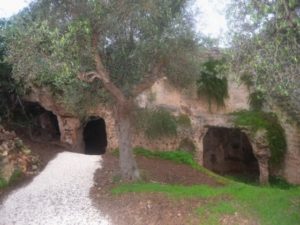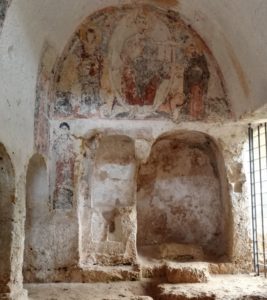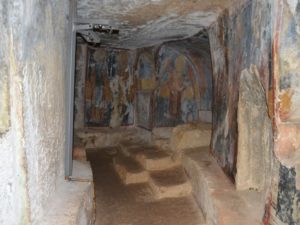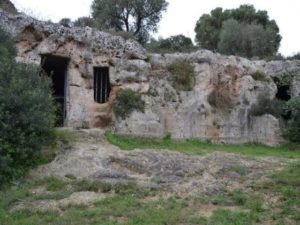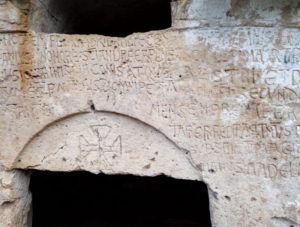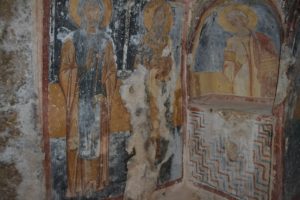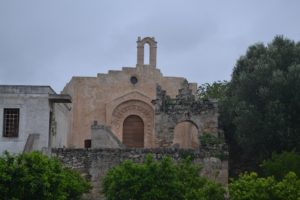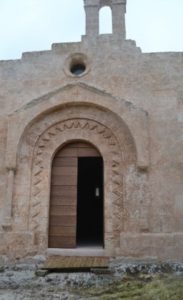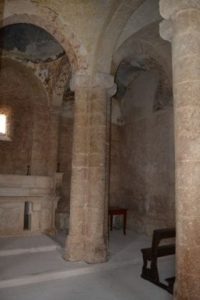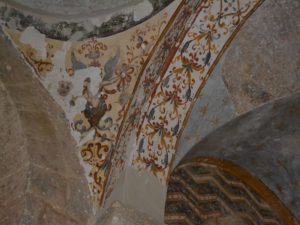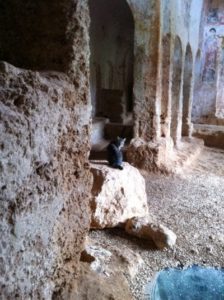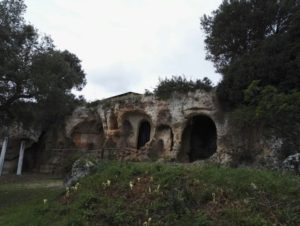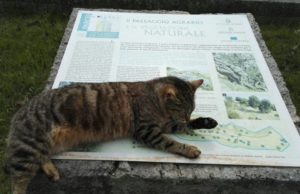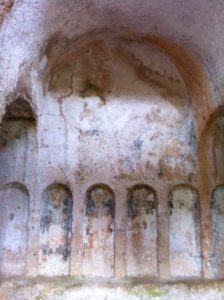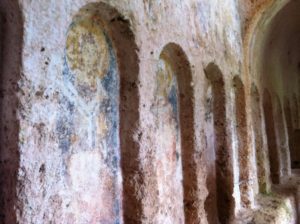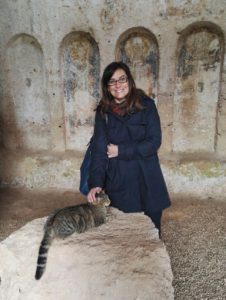The golden triangle – part two.
it is an article by Città Meridiane – cittameridiane.it
The rock settlements between Monopoli and Fasano.
Returning to Lama d’Antico, it was certainly one of the largest and inhabited settlements where nothing was missing: houses into the rock with chambers and cisterns for collecting rainwater, shelters for animals, mills for the milling of olives, spaces to host work environments and the magnificent church, completely painted with frescoes.
It is a true cathedral with a central dome, one of the largest cave churches all aroung Puglia. Inside you enter through a monumental entrance that leads into a distinct environment in two apsed naves. Originally the church was completely frescoed but today most of the paintings are faded. A Maiestas Domini is still visible on the lunette of the central apse and on the left wall there is the figure of the apostle Giovanni Evangelista who blesses.
Also in the Archeological Park of Lama d’Antico, the church of San Lorenzo is included, in which a particular iconostasis is conserved and strongly linked to the Greek-Orthodox religious services. And it is precisely here that we find the two Holy Fathers: St. Basil of the Orthodox Church and St. Benedict of the Latin Church. Remarkable are the other wall paintings that are painted with pictorial ability and accuracy for the use of colors and the intensely expressive features of the faces that make this church one of the most fascinating examples of Byzantine art in the canyons of Fasano.
Among the most interesting houses there is Sant’Andrea and San Procopio, in the territory of Monopoli, which can be reached from Masseria Rosati. In the Assunta’s canyon there are numerous cave-dwellings, a mill, an oil mill and other rooms for handicraft use, and the crypt church with a sculpted front with great care and skill. Very interesting is the long inscription engraved in Latin above the lunette that dates the church to 1073.
Also the bema of this church is unusual in the area, as it has a double separation in stone 50 cm high with two openings in the direction of the apses. With regard to the wall paintings, a Saint George on horseback, the saint of the Crusades, is still visible. In the paintings of San Procopio one can perceive the passage from the Byzantine tradition to a new pictorial current of western inspiration with Norman-Swabian matrix.
Angevins paintings are present in the depiction of Sant’Eligio painted with bright colors and the symbols attributed to him by tradition as patron of the farriers: two nails, a hammer, a pincer, a horseshoe and a small black mule.
Our tour ends in the canyon near the Masseria Ottava Grande (Provincial Road 10, Contrada Ottava, Montalbano di Fasano – phone +39 320 6844285 – www.masseriaottavagrande.it – info@masseriaottavagrande.it), a ravine with high walls rocky with a system of large caves of which some used as a oil mill consisting of three large rooms and other small rooms and equipped with millstone working until the ’50s. In front of the farm, the oldest example of a fortified tower, the church of San Pietro from the 12th century which – as explained by the archaeologist Roberta Mussardo, who in the meantime has been added to us – is a typical example of a domed building in axis, whose scheme spread widely in Puglia from the 8th to the 13th century.
The church is a small jewel in which the simple exterior architecture does not predict the extent and the internal richness.
Impressing are the pillars that extend upwards and support the arches of the three domes made with cross vaults.
Subsequently, San Pietro was decorated with elegant floral motifs.
It should be noted that the building has returned to being usable thanks to the Indelli family that owns it, after a long period of neglect. Together with the church the rural house has also been recovered, which is located in the canyon next to which stands an ancient style and a fragrant citrus grove closed by high walls covered in cocciopesto and equipped with stone channels to bring the water from the cistern.
read also THE GOLDEN TRIANGLE – PART ONE

